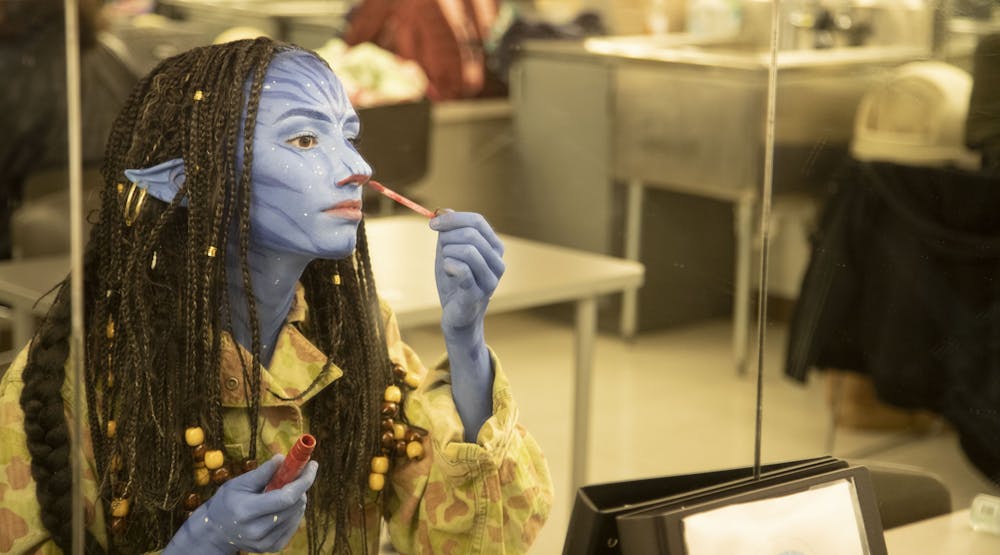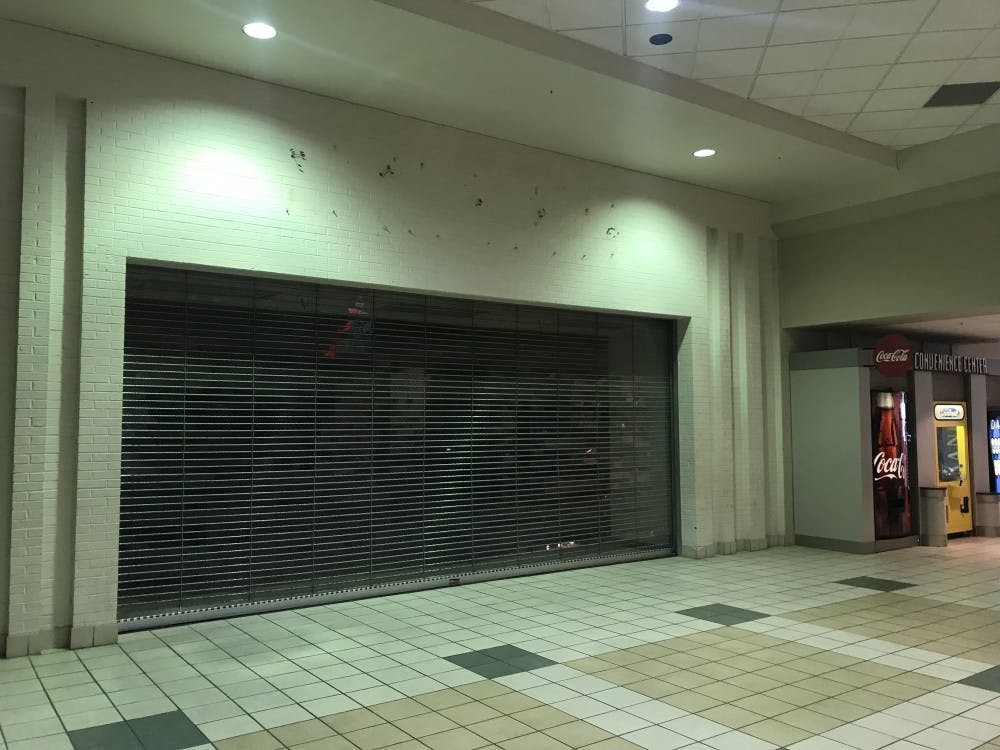Silence falls over the crowd. The orchestra plays the first notes. Energy vibrates through the room, as anticipation grows. Goosebumps form, and smiles widen as the curtain opens to reveal a the set — elaborately painted structures and period props, costumes, hair and makeup.
Before an actor says the first line — in that opening pause — the audience enters the story. Kip Shawager, associate professor emeritus of theatre design of the Ball State University Department of Theatre and Dance, said these visual cues establish the setting, the time period and the tone of the story.
“We’re supporting the actors and the directions and everything they do by surrounding them with visuals to tell the story that makes sense,” he added.
Shawger has been involved in theatre since the 1960s. His work can be felt in most shows done at Ball State, as well as a number of Off-Broadway and Carnival Cruise work, accumulating more than 400 design credits to his name. At Ball State, he teaches classes about prop and set creation.
Shawger shares that all the visual and design aspects of theatre — costuming, sets, props, hair, makeup and lighting — all have to work in unison.
“I worked on a show a long time ago where the scenery went one direction, and the costume designer went another,” Shawger. “When we saw [the actor] on stage for the first time with the stage lights, the costume designer didn’t pay attention to what the lighting designer was doing. The light designer used color gels. Green costumes turned black against a different color set. It was just a disaster. They had to change all the costumes.”
The process for planning the design of a show at Ball State starts early, Shawger said. Months before rehearsals, the director meets to discuss the show’s creative direction with the costume director, set designer, lighting director, and hair and makeup director.
Set Design and Props
Shawger said research is a huge part of these roles. During the 2017 production of “Shrek: The Musical,” for example, he knew the director wanted a more realistic approach to the set. So, Shawger researched swamps.
That research led him to sketches that evolved into drawings he then presented to the director of the show. Once the director approved the designs, Shawger made computer renderings and then mini 3D models of the designs. He gives these models and drawings to the set shop to build these sets. Sometimes, he would have to revise the designs based on what the set shop could do. The whole process takes months, and more involved shows start this process the semester before the first performance.
At roughly the same time a team of students at Ball State gathers items needed for the show. Some of these props will be hand made.
Some props are purchased or rented, while others are cobbled together from the theatre and dance storage unit or through thrifting and crafting. . The set shop often helps with creating props, such as trees from wood or Styrofoam and lacquer thinner or stuffed animals from felt and fake eyelashes.
In the 1999/2000 production season, Ball State put on “Master Harold and the Boys.” Shawger said the director wanted large fake animal heads on the walls of the tearoom in Africa, but Shawger had a personal objection to the project.
“I’m an animal rights activist, and I don’t believe in buying real stuffed animals and things like that,” he said. “I went to a taxidermy supplier place and bought Styrofoam forms of the animals, and we went to JOANN Fabrics and got some fabric and glued fabric onto the faces, and we put drag queen eyelashes on them, so they could be seen from a distance.”
Costumes
Ball State costume shop director Alexander Stearns explained that costuming follows principles and elements of design like balance, color, proportion and texture.
“So [the question] becomes how do we incorporate these elements?” she asked. “How are we showing rhythm through straight lines in this robe? Are we showing it through some other sort of pattern on a costume that might translate something differently?”
These design principles are an intentional choice. When doing costumes for dancers, the costume must show off the body and movement, Stearns said.
Kathryn Rowe is an associate professor of theatre and dance and the department’s costume designer. She has been involved in costuming since she was in college before working Off-Broadway.
Rowe said she tries to “get to know” a show before the design process. Then, she will work with the director of the show, as well as other creatives involved in the show, to ensure that everyone is on the same page. After that, she starts designing.
“I have to try to find out who the character is by capturing images I think might capture the character,” Rowe said. “That is really kind of where the meat, the heart of it is.”
The research Rowe does comes from looking at photos of the time period, as well as elements of the character. If the character is a student, for example, she looks at what students are wearing in “day in my life” videos online, she said.
Hair and Makeup
Robert Dirden is an associate professor of theater who teaches classes about hair and makeup design. Dirden has been involved in costuming shows since 1987, and he has worked on more than 200 shows in Muncie.
A designer of hair and makeup for a show attends creative direction meetings before a show is cast, then they will visit a few rehearsals and attend tech week and dress rehearsals, the final weeks of rehearsals before a show opens. All involved in the productions will do full run-throughs of the show. Actors will wear their full costumes for these.
Makeup and hair work hand and hand with costuming in establishing the essence of a character, Dirden said.
“It’s our job to make sure the audience understands where they’re at and what's going on and who these people are and what they’re looking at,” he said. “It’s our job to make sure that the actors feel like they are the character that they are portraying.”
When thinking about designing a show, Dirden said he considers the “5 Ws: Who, What, When, Where, Why.” The answers to these questions are found through a lot of research of time, place, the character, the theme of the play and more. Understanding the answers to these questions, in conjunction with working with other designers, helps ensure a show’s cohesion, he said.
“I love it when a friend of mine talks to me about a show and he doesn’t even mention the design choices I made, they mention how good the show was,” Dirden said. “The way that we did our job and making them believe they were where they were supposed to be — that's my favorite part.”
The Ball State School of Theatre and Dance’s remaining performances in their 2022/2023 Season can be found on the school’s website.





